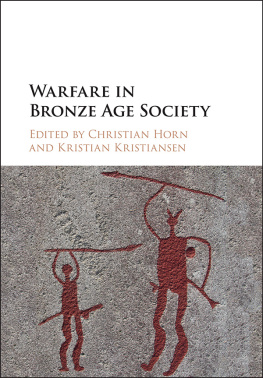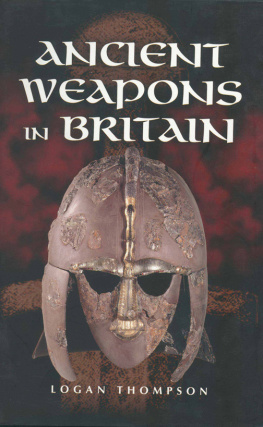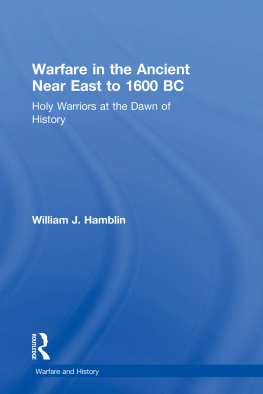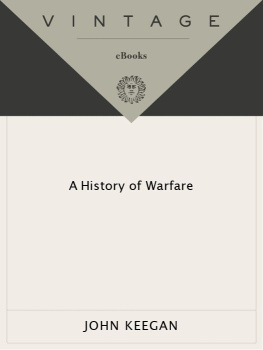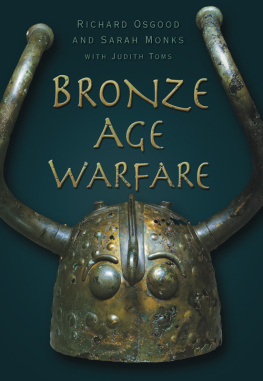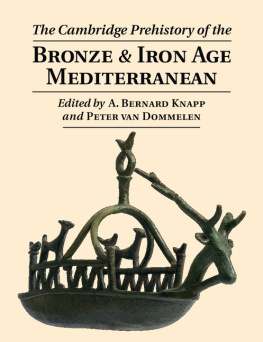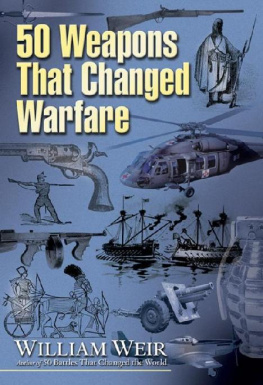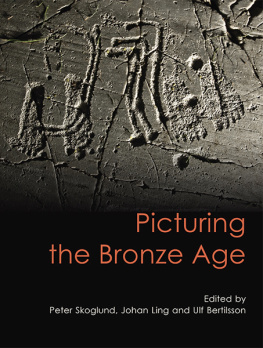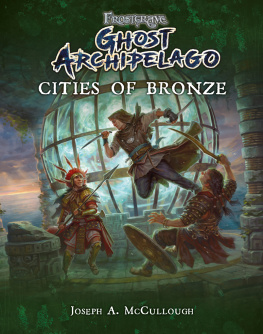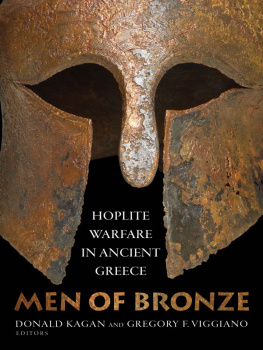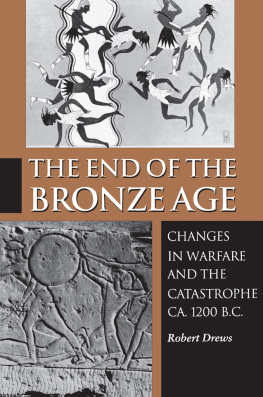Warfare in Bronze Age Society takes a fresh look at warfare and its role in reshaping Bronze Age society. The Bronze Age represents the global emergence of a militarized society with a martial culture, materialized in a package of new, efficient weapons that remained in use for millennia to come. Warfare became institutionalized and professionalized during the Bronze Age, and a new class of warriors made their appearance. Evidence for this development is reflected in the ostentatious display of weapons in burials and hoards and in iconography from rock art to palace frescoes. These new manifestations of martial culture constructed the warrior as a Hero and warfare as Heroic. The case studies, written by an international team of scholars, discuss these and other new aspects of Bronze Age warfare. Moreover, the essays show that warriors also facilitated mobility and innovation as new weapons quickly spread from the Mediterranean to northern Europe.
Christian Horn is a researcher and executive board member of the graduate school of Human Development in Landscapes at the Christian-Albrechts-University in Kiel. His scholarship focuses on Bronze Age weapons, their use and social implications. During his PhD, he carried out a European-wide study of halberds, published in a book titled Studien zu den europischen Stabdolchen (2014), and he later carried out similar studies of lances, spears and swords in northern Europe during his participation in the EU Marie Curie project Forging Identities, from which he published several articles. His recent project is entitled Materiality of Violence and focuses on Bronze Age rock art and metalwork, collaborating with material scientists and conducting fieldwork at the UNESCO world heritage site at Tanum.
Kristian Kristiansen is Professor of Archaeology at the University of Gothenburg. He is co-editor of the book Organizing Bronze Age Societies (Cambridge University Press, 2010), the author of Europe before History (Cambridge University Press, 2000) and co-author of The Rise of Bronze Age Society (Cambridge University Press, 2006), which was awarded best scholarly book in 2007 by the Society of American Archaeology. He received the Prehistoric Societys Europa Prize in 2013 and the British Academys Graham Clark Medal in 2016. His most recent work has been the European Research Counciladvanced grant The Rise. With a team of scientists, it has been possible to document trade in woollen textiles and metals, as well as large-scale migrations in western Eurasia during the Bronze Age.
University Printing House, Cambridge CB2 8BS, United Kingdom
One Liberty Plaza, 20th Floor, New York, NY 10006, USA
477 Williamstown Road, Port Melbourne, VIC 3207, Australia
314321, 3rd Floor, Plot 3, Splendor Forum, Jasola District Centre, New Delhi 110025, India
79 Anson Road, #0604/06, Singapore 079906
Cambridge University Press is part of the University of Cambridge.
It furthers the Universitys mission by disseminating knowledge in the pursuit of education, learning, and research at the highest international levels of excellence.
www.cambridge.org
Information on this title: www.cambridge.org/9781107185562
DOI: 10.1017/9781316884522
Cambridge University Press 2018
This publication is in copyright. Subject to statutory exception and to the provisions of relevant collective licensing agreements, no reproduction of any part may take place without the written permission of Cambridge University Press.
First published 2018
Printed in the United Kingdom by TJ International
A catalogue record for this publication is available from the British Library.
ISBN 978-1-107-18556-2 Hardback
Cambridge University Press has no responsibility for the persistence or accuracy of URLs for external or third-party internet websites referred to in this publication and does not guarantee that any content on such websites is, or will remain, accurate or appropriate.
Contributors
Kate Anderson, Edinburgh, UK
Ute Brinker, Landesamt fr Kultur und Denkmalpflege Mecklenburg-Vorpommern, Schwerin, Germany
Jan-Heinrich Bunnefeld, Landesamt fr Denkmalpflege und Archologie Sachsen-Anhalt, Halle, Germany
Anne Dombrowsky , Prohn, Germany
Roger Doonan, Department of Archaeology, University of Sheffield, UK
Jana Drger, Grimmen, Germany
Mark Gener, Instituto de Historia, Madrid, Spain
Ioannes Georganas, University of St. Andrews, UK
Anthony Harding, Ludwig-Maximilians-Universitt Mnchen, Germany
Christian Horn, Christian-Albrechts-Universitt Kiel, Germany
Detlef Jantzen, Landesamt fr Kultur und Denkmalpflege Mecklenburg-Vorpommern, Schwerin, Germany
Florian Klimscha, Deutsches Archologisches Institut, Berlin, Germany
Kristian Kristiansen, Gteborgs Universitet, Sweden
Joachim Krger, Landesverband fr Unterwasserarchologie M-V, Wusterhusen, Germany
Gundula Lidke, Niederschsisches Landesamt fr Denkmalpflege, Hannover, Germany
Johan Ling, Gteborgs Universitet, Sweden
Barry Molloy, University College Dublin, School of Archaeology, Dublin, Ireland
Tobias Mrtz, Freie Universitt Berlin, Institut fr Prhistorische Archologie, Berlin, Germany
Derek Pitman, Bournemouth University, Poole, UK
Thomas Terberger, Niederschsisches Landesamt fr Denkmalpflege, Hannover, Germany
Andreas Toreld, Stiftelsen fr dokumentation av Bohuslns hllristningar, Tanumshede, Sweden
Helle Vandkilde, Aarhus Universitet, School of Culture and Society - Prehistoric Archaeology, Hjbjerg, Denmark
Preface
This volume is the result of a conference on Bronze Age warfare held in December 2012 at the University of Gothenburg. The aim was to situate warfare in its social, demographic, technological and ideological contexts. We wish to express our gratitude to all speakers and participants for their active engagement and for contributing to lively discussions during the conference. Since then, the editors and authors have worked together to transform the original contributions and debates into a coherent publication. We are grateful to the two anonymous reviewers for providing constructive comments, which benefitted the book, and we are also grateful to Helle Vandkilde for her willingness to provide a concluding chapter.
The conference was part of the European Union Seventh Framework Programme Forging Identities (FP7/20072013) under grant agreement number 212402. We are grateful to Riksbankens Jubileumsfond for funding the conference. We extend our gratitude to Rich Potter for help with all technical issues, including layout, the conference poster and copy editing. Further thanks go to Sara Lyttkens, for taking care of logistical issues and the well-being of the participants during the conference.
Chapter One Introducing Bronze Age Warfare
Christian Horn and Kristian Kristiansen
Contextualizing Bronze Age Warfare: The Emergence of Martial Arts
In this book, it is argued that the Bronze Age represents the global emergence of a militarized society with a martial culture materialized in a package of new, efficient weapons that remained in use for millennia to come. It is evidenced in the ostentatious display of weapons in burials and hoards, as well as in iconography from rock art to palace frescoes (Osgood, Monks and Toms ). It all comes down to the historical fact that warfare became institutionalized and professionalized during the Bronze Age, and a new class of warriors made its appearance, one displaying differences among Eurasian, Mediterranean, and European warrior classes that were rooted in their different social and political complexities. However, the differences were not as large between these different groups of warriors because they employed similar types of swords and warrior gear. The causes behind this development can be traced back to a combination of factors.

